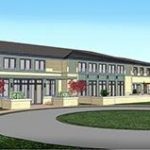What metric(s) should senior housing/healthcare providers consider when deciding to build a new facility?
“Many use demographics, population statistics, income analysis and penetration rates to help them decide where to build a new facility. But this may not be enough,” advises Cambridge Realty Capital Companies Chairman Jeffrey A. Davis.
Cambridge is one of the nation’s leading senior housing/healthcare lenders, with more than $5 billion in closed transactions. Through its Cambridge Investment and Finance Co. acquisition arm, the company is active in direct property acquisitions, joint ventures, sale leasebacks, mezzanine financing and the acquisition of distressed debt.
Rather than focusing on penetration rates to gauge demand in a given area, developers may want to focus on occupancy levels of communities they are targeting instead, he says.
“Penetration rates are supposed to help providers determine if a particular area is oversaturated or underserved with senior housing properties. But experts reviewing this data sometimes find there is little correlation between penetration rates and occupancy rates in the area.
“One might expect an underserved market to maintain a low penetration rate and high occupancy levels. In fact, this often is not the case,” he observes.
Mr. Davis says a market might maintain low penetration rates and low occupancy levels as well. The penetration rate is indicating that the market is underserved and could use another community, but this may not be the case.
“If this were so, communities in the area would maintain higher occupancy rates,” he noted.
“Instead of using penetration rates as the deciding factor on where to build, occupancy rates should be considered instead. If the communities in a particular region all maintain high occupancy rates, the likelihood that demand for senior services is strong and could support additional housing properties increases,” he added.
In addition to looking at occupancy rates when deciding if or where to build, providers should also look at areas where there are opportunities to form relationships that can benefit the community as well, Mr. Davis believes.
“A skilled nursing home provider should investigate the hospitals in the area and their readmission rates to see if a partnership is possible. And to gauge the type of demand that already exists for services they might provide,” he said, adding:
“When deciding where to build, providers are well advised to consider smaller markets outside the nation’s top markets. But decisions should await a thorough analysis of competition in these areas.”





We have lots of demand when it comes to assisting elders I Live here in Juneau Alaska and I just wanna suggest that we are looking for someone to build assisted living here in Juneau. We have a big list of people waiting in line some of them die waiting. We only have one assisted living here in Juneau that’s Pioneer home. I do work there so I know how bad we need a assisted facility here.